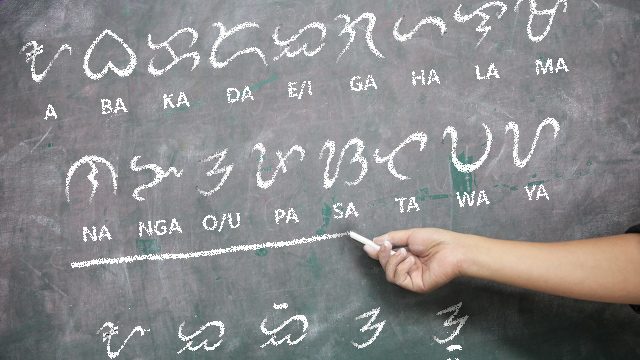SUMMARY
This is AI generated summarization, which may have errors. For context, always refer to the full article.

MANILA, Philippines – Filipino mathematicians have developed a smart system that can transliterate paragraphs of Baybayin script to Latin alphabet, making the pre-colonial 17-character writing system more accessible to the public.
Associate professors Dr. Renier Mendoza, Dr. Rachelle Sambayan, and graduate student Rodney Pino of the Institute of Mathematics, University of the Philippines-Diliman collected over a thousand images of each Baybayin character in the course of three months.
These images were run through an optical character recognition (OCR) system to distinguish the Baybayin script from Latin characters. Once the Baybayin words were identified, the researchers used the support vector machine (SVM) character classifier to convert each Baybayin word to Latin characters.

According to the researchers, this is most likely “the first system that discriminates, at the block level, the Baybayin script from Latin.”
Why is this important?
Right now, such efforts are only limited to transliterations, or the conversion of words from one script to another. Full translation, which takes into account the meaning and context of language, is still something to be attained.
“Identifying the correct phrases from various transliteration choices needs delving into the syntax of the Tagalog language,” the researchers wrote in their paper’s conclusion. “This is an exciting future research direction and demands a thorough study.”

Researchers have high hopes that the study, and the succeeding research on Baybayin transliteration, will give a deeper understanding of the script.
They are currently planning to improve the OCR system and make it understand the context of Baybayin words and phrases. This can lead to a full-fledged translator.
“We’re trying to refine the software we developed to make it easier for future users to navigate it,” Mendoza said in a press release. “We also dream of creating a mobile application that automatically and accurately translates Baybayin characters just by hovering over the phone.”
Filipinos, like most of the rest of the world, use the Latin alphabet. In the recent past, the Philippine government has made efforts to preserve Baybayin and make it relevant to the current generation.
Part of these efforts is the House of Representatives’ approval of the House Bill 1022 in 2018, declaring Baybayin as the country’s national writing system.
In popular culture, Baybayin has been featured in merchandise such as T-shirts, mugs, and used in public places like in airports and new coffee shops.
The Lagusnilad Underpass in Manila used Baybayin on directional signages. In the University of the Philippines-Diliman campus, Baybayin was painted on biking and running lanes.
The efforts to revive the ancient indigenous script had received flak from critics as well, with some saying it is impractical and a “blow for the nation’s linguistic diversity.” – Rappler.com
Add a comment
How does this make you feel?






There are no comments yet. Add your comment to start the conversation.